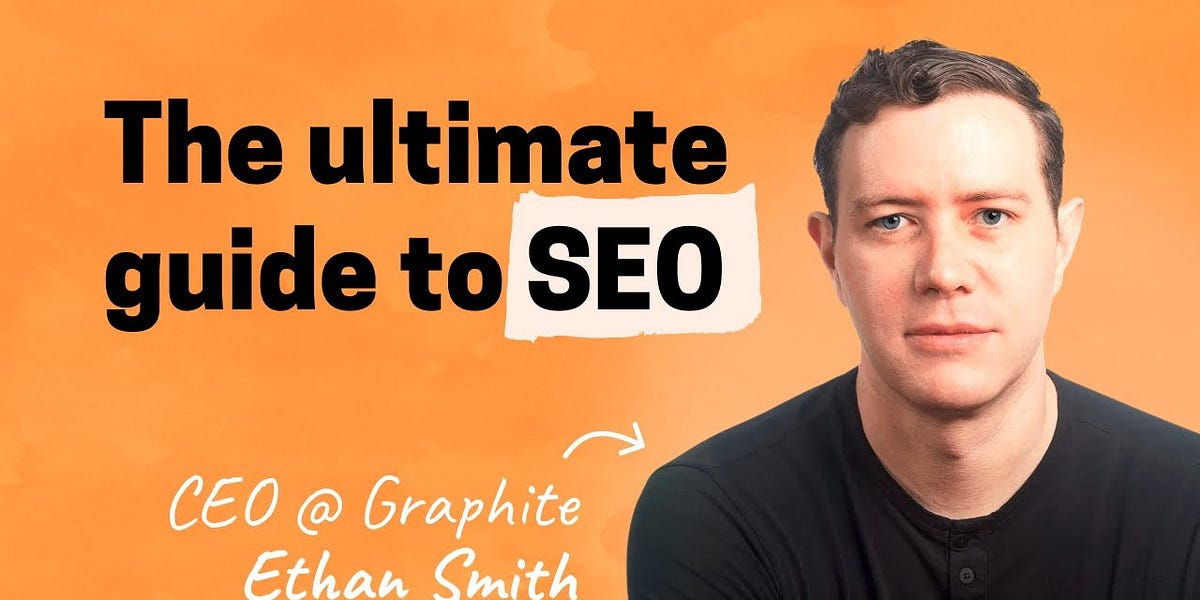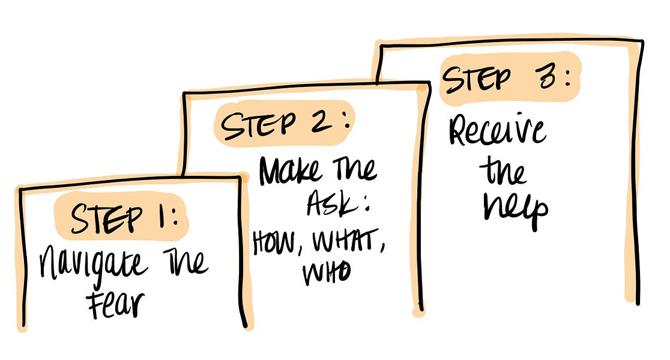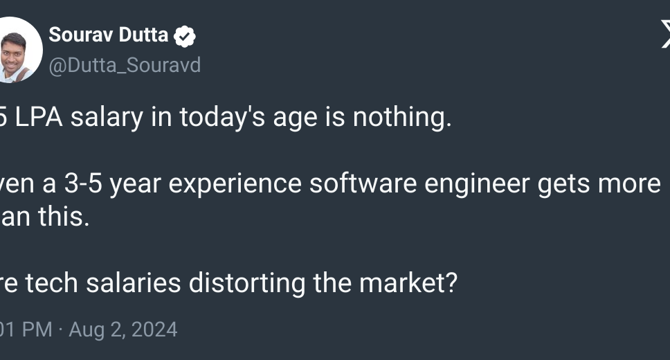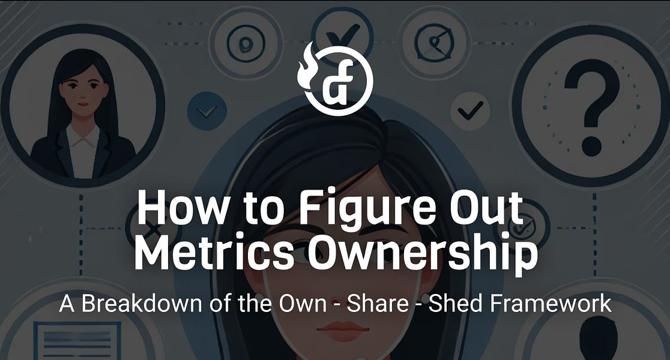Productivity News
Lenny's Newsletter
453

Image Credit: Lenny's Newsletter
Ethan Smith: The power of internal linking for SEO
- Ethan Smith is the SEO expert who worked with Upwork, Medium, and Masterclass to help them grow their business. SEO involves increasing website visibility to bring in more organic traffic, and good internal linking is an essential, but often overlooked aspect of this. Internal links are a means of connecting pages of the same website, allowing search engines to better understand a site’s structure, distributing link equity and improving the user experience. Ethan recommends 5-10 internal links per page, with anchor text being relevant to the content. Editorial SEO is more effective than programmatic SEO in driving traffic and consists of manually written content. Additionally, AI tools may harm your content by producing inaccurate information.
- Internal linking, an essential aspect of SEO, is often overlooked by companies. It allows search engines to better understand the structure of a site and is a means of distributing link equity and improving the user experience.
- Internal linking is a means of connecting pages of the same website. Good internal links involve both contextual and navigational links.
- Contextual links connect one web page to another internally, within body content, driving deeper engagement with visitors. Navigational links are used in the header, footer or sidebar of a website.
- Internal links, in addition to being a valuable tool for distributing link equity, can also target specific keywords, teach search engines about a website's structure, and improve the user experience.
- Ethan recommends using anchor text that is relevant to the content when linking pages, and at least 5-10 links per page. Additionally, Ethan believes editorial SEO is more effective than programmatic SEO in driving traffic.
- AI tools like ChatGPT have the capability to extract structure, identify topics and perform keyword research, but they shouldn't be used for manual writing. GPT-3 sentences may or may not be accurate.
- Google weighs pages with accurate and relevant content more heavily, so GPT-3 sentences that are unreliable could harm users and business.
- For companies looking to develop an internal linking strategy to improve search rankings, Ethan recommends conducting a site audit, identifying best-performing pages, identifying related content, and linking related content to the best-performing pages.
- Enterprise companies like Masterclass, Medium, and Upwork turned to Ethan Smith to optimize their search engine optimization (SEO). SEO includes increasing website visibility to bring in more organic traffic. Good internal linking is an essential aspect of this.
Read Full Article
26 Likes
Lenny's Newsletter
421

Image Credit: Lenny's Newsletter
On asking for help (even when you really don’t want to)
- Learning to effectively ask for help can be a career unlock according to many leaders.
- People often believe that asking for help can make them appear weak or incapable of doing their job.
- Asking for help can be specifically salient among product managers, as they are lauded for their ownership of problems.
- Asking for help does not diminish your ownership or credibility, but can increase your agency and build higher-trust relationships.
- Navigating fears associated with asking and making your asks more effective are important for incorporating this skill into your life.
- Increasing your awareness of emotions and allowing your fear without changing it can help you to address your fears.
- Offering yourself internal security with cognitive reframes can also shift you in the moment towards possibility rather than pessimism.
- Expanding your edges of fear through experimentation and data gathering is vital for facing your fear and stress.
- Once you have navigated your fear, start making the ask by using a structure tailored to your situation.
- Effective asking starts with what you need help with, who can help, and the specific details of your ask.
Read Full Article
22 Likes
Minis
2.3k

Image Credit: Minis
'Never quit your job': Self-made multimillionaire lists benefits of engineering a layoff instead
- Self-made multimillionaire Sam Dogen, founder of Financial Samurai, advises professionals to consider getting laid off rather than quitting.
- Dogen, a former banker who has generated over Rs 3 crore through investments, found orchestrating a layoff more financially beneficial.
- By engineering his layoff over a decade ago, he received three months of base salary plus a substantial severance, which, combined with his passive income, allowed him to retire early.
- Dogen recommends negotiating a layoff for those planning to leave their jobs, as it often offers more financial security than resigning voluntarily.
Read Full Article
11 Likes
Minis
1.5k

Image Credit: Minis
Investor sparks a row by saying ₹25 LPA salary is ‘nothing’ in this day and age
- Investor Sourav Dutta has stirred controversy by claiming that a ₹25 lakh per annum salary is “nothing” in today’s market, suggesting tech salaries are distorting the industry.
- Dutta, who previously faced backlash for labeling people with ₹50 lakh net worth as “lower middle class,” argued that a ₹30 lakh salary after five years is common.
- Critics, including techies and data engineers, dispute his claims, pointing out that such salaries are rare, particularly at major IT firms like TCS, and often require frequent job changes. The debate highlights ongoing frustration with salary stagnation in the tech sector.
Read Full Article
10 Likes
Minis
2.2k

Image Credit: Minis
Ex-Microsoft employee who got fired, shares why he is thankful to Microsoft
- In 2005, Kapil Kulshreshtha, a Sr. Program Manager at Microsoft India, faced an abrupt layoff with no warning—just a cheque and a door.
- In a LinkedIn post, he shared his emotional turmoil, including anger and confusion, and his initial step of seeking closure by meeting his former manager. He described the subsequent job hunt as challenging but ultimately found a position at Cognizant.
- Reflecting on the experience, Kulshreshtha viewed the layoff as a pivotal moment that pushed him to reassess his goals and career path. He encouraged others facing similar situations to seek support and stay resilient.
Read Full Article
15 Likes
Minis
2.3k

Image Credit: Minis
Delhi NCR: Powerhouse of India's Startup Ecosystem
- Delhi NCR is emerging as a dominant force in India's startup landscape, accounting for nearly 78% of the country's listed startup value.
- An impressive 45% of all listed Indian startups call Delhi NCR home, showcasing the region's entrepreneurial vigor. Among the top five most valued listed startups, four—Zomato ($23BN), Infoedge ($11BN), Makemytrip ($9.4BN), and Policybazaar ($8.1BN)—are headquartered in Delhi NCR.
- According to Inc42’s latest report, Delhi NCR was the third most funded startup hub in H1 2024, raising $1.06 billion across 91 startup deals. This thriving ecosystem underscores Delhi NCR's pivotal role in India's startup success story.
Read Full Article
26 Likes
Minis
1.8k

Image Credit: Minis
The worst way to answer ‘What are your weaknesses?’ according to a 25-year hiring pro
- Answering "What are your weaknesses?" with clichés like "perfectionist" or "workaholic" is a mistake, says Tom Gimbel, CEO of LaSalle Network.
- Instead, Gimbel, who has hired hundreds over 25 years, advises showing self-awareness and solutions for your shortcomings. Employers want to know how you address your weaknesses.
- Prepare by identifying a technical or soft skill you’re working to improve and describe the actions you’re taking, such as taking classes or seeking mentorship.
- Gimbel’s top interview tip: Be honest and humble about your weaknesses, and demonstrate your proactive approach to overcoming them.
Read Full Article
19 Likes
Lenny's Newsletter
67

Image Credit: Lenny's Newsletter
Lessons from scaling Uber and Opendoor | Brian Tolkin (Head of Product at Opendoor, ex-Uber)
- Product and ops can be a powerful combination, if they are set up well.
- To run effective product reviews: foster a culture where product reviews are seen as collaborative rather than confrontational.
- When planning experiments with low sample sizes, be honest with yourself about what would be required for a conclusive result.
- When A/B testing isn’t practical due to low sample sizes, explore alternative methods to validate hypotheses.
- Leaders can achieve an environment where challenging work conversations are separated from personal interactions. Outside of work discussions, be friendly and show genuine interest in people’s lives.
- The key at Opendoor is to focus on customer jobs-to-be-done to make decisions.
- Reduce confidence levels of experiments and run with long-term holdouts.
- Creating a good harmonization between product and ops teams is essential.
- Brian Tolkin is the Head of Product at Opendoor, and he was instrumental in launching UberPool, UberHop, and UberExpress.
- Leaders can create a balance of being 'intense and chill' and stay calm under pressure.
Read Full Article
Like
Minis
26.7k

Image Credit: Minis
'We don't negotiate salaries': This Bengaluru CEO claims to pay 'what candidates ask'
- A Bengaluru CEO, Arjun V, Co-Founder and CEO of Zoko, recently shared on LinkedIn that his company does not negotiate salaries.
- “After hiring 18+ members, I've found the secret to retaining world-class talent: We don't negotiate salaries. We literally pay what they ask for,” he wrote.
- Arjun added that salaries are revised annually and shared, “I've only negotiated salary once, to increase the amount a candidate asked for as they undervalued themselves.”
- ”Reactions varied, with some expressing curiosity about the sustainability of this model and others praising it as a revolutionary approach to recruitment.
Read Full Article
213 Likes
Minis
1.8k

Image Credit: Minis
A former Disney recruiter’s No. 1 job interview tip
- In job interviews, Simon Taylor, a former Disney recruiter, emphasizes the importance of being concise.
- He advises that answers should be around one minute long, showcasing respect for the interviewer’s time and focusing on relevant details. Short, impactful responses allow interviewers to gauge your suitability quickly and decide if they need more information.
- Taylor suggests providing a summary of your accomplishments and leaving room for interviewers to ask for more details. This approach not only keeps the interview efficient but also demonstrates your awareness of the interviewer's needs.
Read Full Article
7 Likes
Minis
1.4k

Image Credit: Minis
Three lessons from tech layoffs on building career agility
- Diversify Early: Engage in side gigs and build a diverse network to keep career options open. Example: Steffen used his time at Google to explore interests and create new opportunities.
- Prioritize Self-Discovery: Take time to reflect and avoid rushing into new roles. Example: Ekaterina utilized her severance package to deliberate on her next steps and diversify her income sources.
- Keep Your Pipeline Open: Maintain ongoing job searches and network connections. Example: Ben, after a layoff, continued networking and exploring new fields, which helped him stay resilient and adaptable.
Read Full Article
15 Likes
The Beautiful Mess
287

Image Credit: The Beautiful Mess
TBM 304: Losing a Day a Week to Inefficiencies?
- According to a recent Atlassian and DX study, developers lose at least one full day per week due to inefficiencies, and 2 out of 3 developers are still losing 8+ hours a week to inefficiencies in their roles.
- For the roofers and performers, the waste is extremely tangible. In knowledge work, we typically pivot to another task and take a less tangible context-switching hit. Workarounds and task switching become habitual.
- As scary as it sounds, losing a day of a week might be a blip in the grand scheme of things. Getting eight more hours of "quality work" might not make any difference whatsoever.
- The real question is how much revenue those developers could generate with 4,000 hours. I guess that with a sufficiently informed strategy and customer insights, it would be more than $6.9 million.
- Most teams address local issues within their immediate influence. When it comes to anything more global, they typically face a lot of pushback and second-guessing.
- The path forward requires a deep cultural shift in many companies—not just running retros, incrementally better measurement, and better voice of developer efforts, etc.
- The problem (and opportunity) has been out in the open for a long time—it is the talking about it that has been hard.
- These days, people in companies wants to be "efficient" and wants developers to be "productive", but few are willing to make the sacrifices required to achieve operational excellence and foster a culture of continuous improvement.
- Estimates of time losses are important. However, for companies to truly address the challenge, they must figure out how to remove the layers of fear, blame, and apathy.
- The study recommends 'Feedback loops that allow for continuous improvement through learning and adjustments.'
Read Full Article
14 Likes
Minis
3k

Image Credit: Minis
Here's what recruiters look at on your resume
- Recruiters spend just 3-5 seconds on resumes, says Simon Taylor, a former Disney recruiter. They quickly check three elements: current job title, experience at reputable companies, and a resume summary.
- The job title is compared with the role they’re hiring for to assess alignment. Experience at reputable companies indicates your previous work culture and environment. A resume summary, though optional, provides a quick overview of your skills and experiences.
- To improve your chances, tailor your resume by making job titles and employers clear and aligning your summary with the job description language. This helps recruiters see your relevance quickly.
Read Full Article
15 Likes
Minis
2.5k

Image Credit: Minis
What is forced resignation? Man’s post on workplace practice stirs discussion
- Forced resignation occurs when companies create conditions that compel employees to resign, despite their performance being satisfactory.
- In a viral LinkedIn post, Gagan Makin shared his experience, claiming companies, big and small, employ this tactic due to financial constraints. Many LinkedIn users resonated with his post, sharing similar stories.
- Makin emphasized that companies prioritize cost-cutting over employee well-being, leading to financial and emotional strain on workers.
- His advice: don't overly prioritize your company, as you are easily replaceable. The post sparked widespread discussion, with many acknowledging this harsh workplace reality.
Read Full Article
33 Likes
The FishmanAF Newsletter
98

Image Credit: The FishmanAF Newsletter
How to Figure out Metrics Ownership
- Metrics ownership is a tricky problem.
- A metric ownership framework that we introduced in the Growth Leadership program might help.
- Metric ownership can be defined in three steps: defining ownership types, mapping ownership to define ideal breakdown, and moving to the ideal state.
- For defining ownership types we can use questions like- Does anyone own this metric today? What does our impact on this metric look like? etc.
- For mapping ownership to define the ideal state, we need to go levels below the north star into input metrics.
- Getting metrics to their ideal ownership state is the third and hardest part of this problem.
- To get buy-in from bosses, we can rely on data and experimentation.
- To share a metric, we have to be friendly with the other people in the sandbox to win them over to the cause.
- If we need to kick that metric to the curb and it’s time to shed a metric then we have three options.
- The hardest part is the human involvement and looking for opportunities to make changes throughout the year.
Read Full Article
3 Likes
For uninterrupted reading, download the app